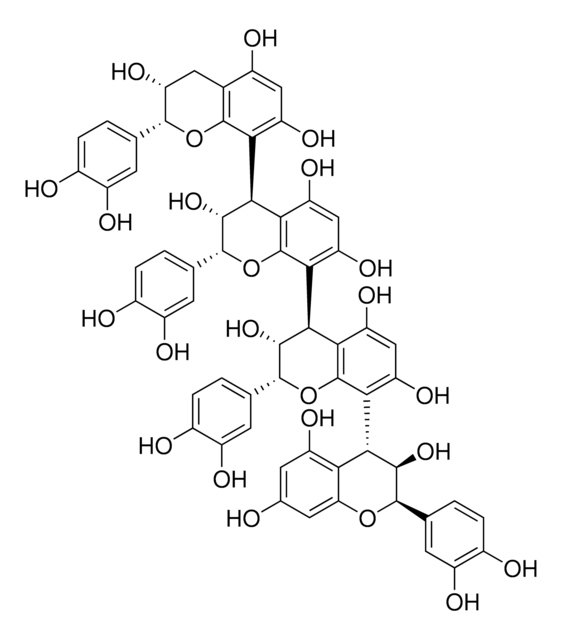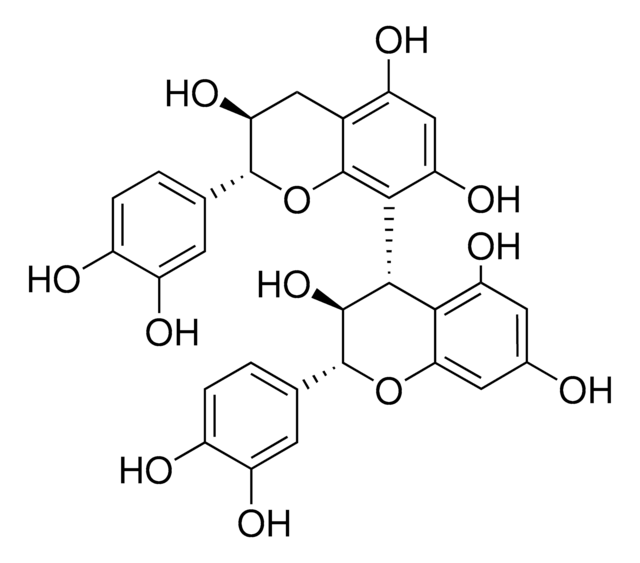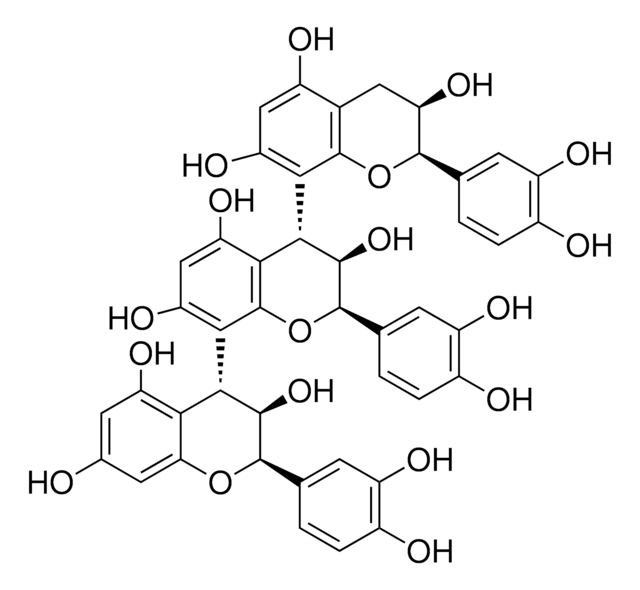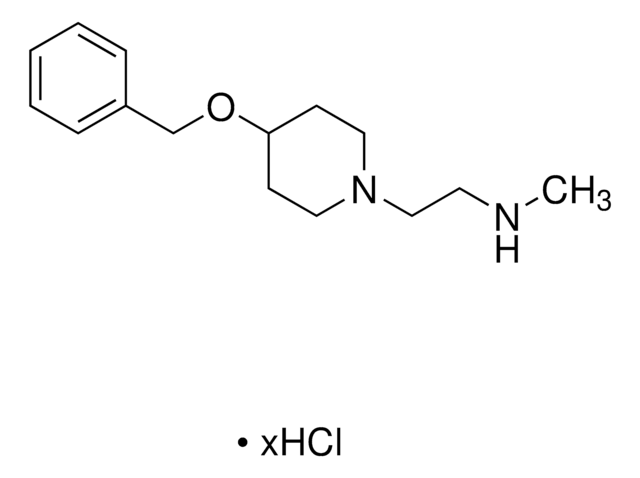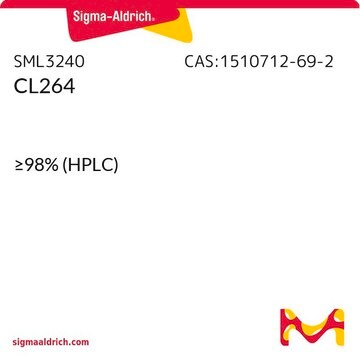SML3965
Procyanidin B2
≥97% (HPLC)
Synonym(s):
(+)-Procyanidin B2, (-)-Epicatechin-(4β→8)-(-)-epicatechin, (2R,2′R,3R,3′R,4R)-2,2′-Bis(3,4-dihydroxyphenyl)-3,3′,4,4′-tetrahydro[4,8′-bi-2H-1-benzopyran]-3,3′,5,5′,7,7′-hexol, Proanthocyanidin B2
About This Item
Recommended Products
Quality Level
Assay
≥97% (HPLC)
form
powder
color
white to pink
solubility
DMSO: 2 mg/mL, clear
storage temp.
2-8°C
Biochem/physiol Actions
Procyanidin B2 is a polyphenolic plant compound that exhibits anti-inflammatory, anti-cancer, antiviral, and antioxidant properties. Procyanidin B2 attenuates dyslipidemia, hyperglycemia, and oxidative stress in individuals with metabolic syndrome. Apparently, it reduces fatty liver by remodeling intestinal flora in a high-fat-cholesterol diet fed rabbits.
Storage Class Code
11 - Combustible Solids
WGK
WGK 3
Flash Point(F)
Not applicable
Flash Point(C)
Not applicable
Certificates of Analysis (COA)
Search for Certificates of Analysis (COA) by entering the products Lot/Batch Number. Lot and Batch Numbers can be found on a product’s label following the words ‘Lot’ or ‘Batch’.
Already Own This Product?
Find documentation for the products that you have recently purchased in the Document Library.
Our team of scientists has experience in all areas of research including Life Science, Material Science, Chemical Synthesis, Chromatography, Analytical and many others.
Contact Technical Service

